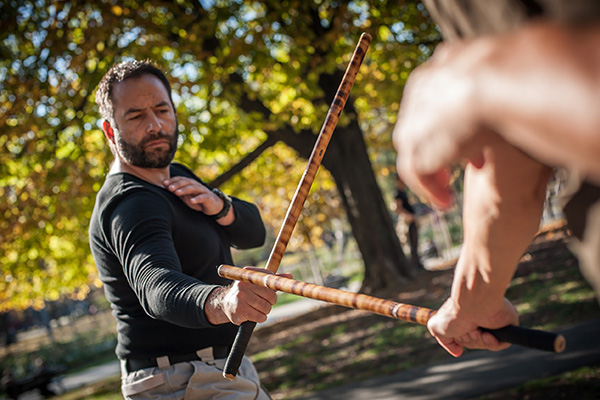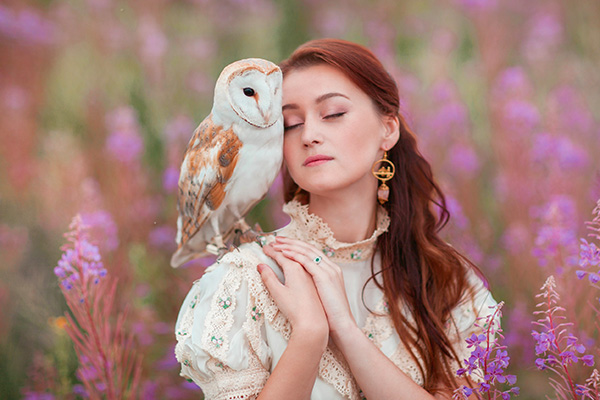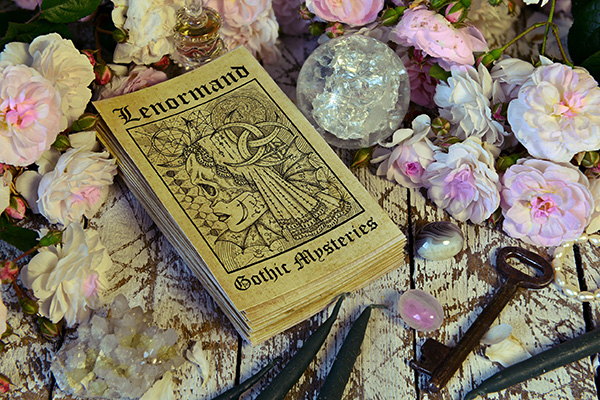oracle cards
Tarot Forecast August 2024: Seven Of Wands
 The card for this month is the Seven of Wands, which predicts the need for determination, resilience and facing challenges head-on.
The card for this month is the Seven of Wands, which predicts the need for determination, resilience and facing challenges head-on.
The Seven of Wands depicts a figure standing on higher ground, holding off opponents below with a single wand. The imagery conveys a sense of defiance and unwavering determination, suggesting that despite the challenges and competition, victory is possible through perseverance and courage.
As we enter this month with the Seven of Wands as our guiding influence, we are reminded of the importance of staying true to our values and beliefs, even in the face of significant obstacles. The Seven of Wands encourages us to adopt a warrior-like spirit, ready to defend our positions and protect what we hold dear.
This card signals a time when we must be prepared to encounter resistance and opposition, whether in our personal, professional or spiritual pursuits. It serves as a reminder that while challenges are inevitable, our strength lies in our ability to remain steadfast and resilient. The Seven of Wands teaches us that through determination and unwavering focus we can overcome adversity and emerge victorious.
We are likely to find ourselves in situations this month where we need to defend our position or beliefs, but remember that your courage and inner strength will see you through. Our resilience and positive attitude will inspire those around us, creating an atmosphere of motivation and progress.
Tarot Forecast July 2024: The Tower
 This month’s card is the Tower, which predicts the energies of disruption, revelation, transformation and the breaking down of old structures.
This month’s card is the Tower, which predicts the energies of disruption, revelation, transformation and the breaking down of old structures.
The Tower card is a powerful symbol of sudden upheaval and change. It’s traditionally depicted as a tall tower struck by lightning, representing chaos and upheaval. It represents life throwing us a curveball.
As lightning strikes and flames dismantle the old structure, it forces us to confront our foundations and belief systems. While painful, this destruction can lead to necessary revelations and a chance to rebuild on a stronger foundation. By letting go of what no longer serves you, you open yourself up to new possibilities.
The Tower showing up in a reading, though scary and troubling at first glance, always precedes a period of significant growth. Destruction creates opportunity. Most situations we face are opportunities, even the bad ones. It’s all about the opportunity and how you see it.
Embracing chaos will be the key to clarity and growth this month. This is a time to rebuild and redesign your life in a way that is more in line with your true self.
Approach the month with an open heart and a willingness to let go of what no longer serves you. Whether it’s health, finances, career, relationships or personal growth, the Tower’s influence will lead you to a more liberated and empowered version of yourself. Trust the transformative power of the Tower. Embrace the changes and you will emerge from this month stronger, wiser and more in alignment with your true self.
Tarot Forecast May 2024: Judgement
 The card for this month is Judgement, which encourages us to rid ourselves of what no longer serves us and to address karmic issues for personal and spiritual growth.
The card for this month is Judgement, which encourages us to rid ourselves of what no longer serves us and to address karmic issues for personal and spiritual growth.
We may especially find ourselves facing the consequences of past actions or decisions this month.
Judgement emphasises the importance of accountability and responsibility, urging us to learn from our experiences and strive for karmic balance. By taking responsibility for our choices, we can break free from negative patterns and create a better future.
This will therefore be a month of reckoning and evaluation. Judgement invites us to reflect on our actions, choices and life path, and challenges us to take responsibility and face any unresolved issues with honesty and courage.
It will be a time of resolution and redemption, allowing us to find closure and make amends for past conflicts or mistakes.
By facing our challenges with integrity and compassion, we can experience inner peace and acceptance, paving the way for healing and growth. It also offers an opportunity for profound transformation and awakening, giving us a fresh start and the chance to embrace new beginnings with optimism and enthusiasm.
Connecting With Your Spirit Animal
 The concept of animals serving as spiritual guides and symbols for personal growth has deep roots in human culture, stretching back to ancient indigenous societies and persisting through to modern spiritual practices.
The concept of animals serving as spiritual guides and symbols for personal growth has deep roots in human culture, stretching back to ancient indigenous societies and persisting through to modern spiritual practices.
This enduring belief stems from the profound connection humans have observed and felt with the animal kingdom throughout history.
In many indigenous cultures around the world, animals traditionally hold a sacred significance and are believed to possess spiritual wisdom and powers. Many cultures also have animal symbolism in their myths, folklore, rituals, and everyday life.
For example, Native American tribes traditionally attribute personal qualities and character traits, such as strength, courage, wisdom, and cunning, to various animals, viewing them as embodiments of these virtues.
Acoording to these indigenous teachings our animal totems or spirit animals offer us guidance, protection, and insight on our spiritual journey.
We can connect with our spirit animal through meditation, dream interpretation, or rituals. By aligning with the characteristics of our chosen animal, we can gain strength, wisdom, and a deeper understanding of ourselves and our path in life.
A Spiritual Approach To Sales Success
 Some of my clients work in sales and have expressed how difficult it is to earn a good commission these days because of the competition in the marketplace. I always advise them to consider a more spiritual approach.
Some of my clients work in sales and have expressed how difficult it is to earn a good commission these days because of the competition in the marketplace. I always advise them to consider a more spiritual approach.
A spiritual approach to sales encourages a focus on building long-term relationships rather than just closing transactions.
Repeat business and customer loyalty are often the result of sustained and meaningful connections.
In a competitive marketplace, companies that emphasize spiritual values stand out.
Many customers are drawn to companies that prioritize authenticity, transparency, and meaningful connection. It enhances reputation and appeal to a growing number of spiritually conscious consumers.
Intuition and divination strategies can provide additional insights to boost sales success. Sales professionals can use these insights to make more informed and strategic decisions, and to sense trends or opportunities in the marketplace before they become apparent.
These insights can also provide guidance on when to launch new products, enter new markets, or initiate major business changes, aligning actions with favorable cosmic or energetic conditions.
Navigate Your Career Change With Inner Guidance
 When a new year dawns we tend to take stock of our lives and consider making some changes, such as in our field of work or our current position. Some people even consider starting a business.
When a new year dawns we tend to take stock of our lives and consider making some changes, such as in our field of work or our current position. Some people even consider starting a business.
It is common to consider a career change at the start of a new year. A new year makes us aware of the passage of time and is therefore often seen as a time for self-reflection and goal-setting.
But as simple as it may seem at first, changing careers can be a daunting process, especially if you hope to achieve the best possible outcome. It requires careful planning, research and preparation, but with the right mindset and approach, it can be a very rewarding and fulfilling endeavor.
Changing careers is inherently uncertain. It involves leaving the familiar for the unknown, and this can be challenging and scary. However, our personal and spiritual growth tends to thrive in uncertainty. It encourages us to step out of our comfort zone and embrace the unfamiliar. Rather than seeing uncertainty as a barrier, consider it an opportunity for personal expansion, self-discovery, and soul evolution.
If you are considering a career change, one of the wisest things you can do is to ask spirit for guidance and support and to follow your inner guidance. Spirit will guide you through the ambiguity and help you make the right decisions along the way. Navigating a career change can be daunting, but tapping into your spiritual inner guidance system will provide more of the clarity and direction you need.
